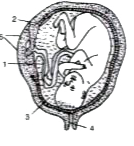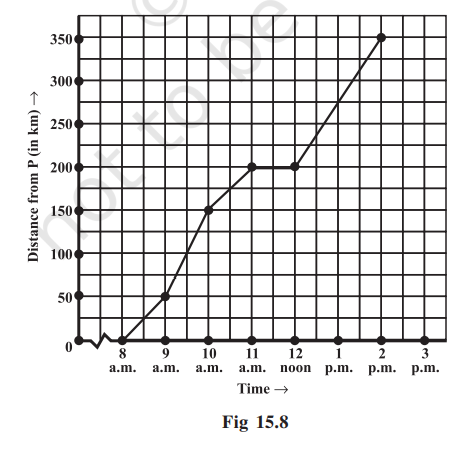The periodic law, as we know it today, owes its development to two chemists.
(i) John Newlands (ii) Dmitri I. Mendeleev
(iii) J.Lothar Meyer (iv) J.W. Dobereiner
Rutherford and Moseley
Alexander newlands and dobereiner
Dmitri mendeleev and Lothar Meyer
De broglie and Neil bohr.
The correct Answer is:C
To solve the question regarding the development of the periodic law and the two chemists responsible for it, we can follow these steps:
1. Understand the Question: The question asks for the two chemists who contributed to the development of the periodic law as we know it today.
2. Identify the Chemists: The options provided are:
- (i) John Newlands
- (ii) Dmitri I. Mendeleev
- (iii) J. Lothar Meyer
- (iv) J.W. Dobereiner
3. Recall Contributions:
- John Newlands: Proposed the Law of Octaves, which was an early attempt to classify elements based on their properties but is not the basis of the modern periodic law.
- Dmitri I. Mendeleev: Developed the first widely recognized periodic table, arranging elements by increasing atomic weight and grouping them by similar properties.
- J. Lothar Meyer: Independently created a periodic table similar to Mendeleev's, also based on atomic weights and properties.
- J.W. Dobereiner: Known for the triads concept, which grouped elements with similar properties but did not contribute directly to the periodic law.
4. Select the Correct Chemists: The two chemists who significantly contributed to the periodic law are:
- Dmitri I. Mendeleev
- J. Lothar Meyer
5. Final Answer: The correct option is (iii) Mendeleev and Lothar Meyer.
- (i) John Newlands
- (ii) Dmitri I. Mendeleev
- (iii) J. Lothar Meyer
- (iv) J.W. Dobereiner
- John Newlands: Proposed the Law of Octaves, which was an early attempt to classify elements based on their properties but is not the basis of the modern periodic law.
- Dmitri I. Mendeleev: Developed the first widely recognized periodic table, arranging elements by increasing atomic weight and grouping them by similar properties.
- J. Lothar Meyer: Independently created a periodic table similar to Mendeleev's, also based on atomic weights and properties.
- J.W. Dobereiner: Known for the triads concept, which grouped elements with similar properties but did not contribute directly to the periodic law.
- Dmitri I. Mendeleev
- J. Lothar Meyer
Topper's Solved these Questions
- CLASSIFICATION OF ELEMENTS AND PERIODICITY BOOK - NCERT FINGERTPS ENGLISHCHAPTER - CLASSIFICATION OF ELEMENTS AND PERIODICITY EXERCISE - HOTS
10 Videos
- CLASSIFICATION OF ELEMENTS AND PERIODICITY BOOK - NCERT FINGERTPS ENGLISHCHAPTER - CLASSIFICATION OF ELEMENTS AND PERIODICITY EXERCISE - EXEMPLAR PROBLEMS
12 Videos
- CHEMICAL BONDING & MOLECULAR STRUCTUREBOOK - NCERT FINGERTPS ENGLISHCHAPTER - CHEMICAL BONDING & MOLECULAR STRUCTUREEXERCISE - Assertion And Reason
15 Videos
- ENVIRONMENTAL CHEMISTRYBOOK - NCERT FINGERTPS ENGLISHCHAPTER - ENVIRONMENTAL CHEMISTRYEXERCISE - Assertion And Reason
15 Videos
Similar Questions
The diagram given below is that of a developing human foetus. Study the diagram and then answer the questions that follow :

(i) Label the parts numbered 1 to 3 in the diagram.
(ii) Mention any two functions of the part labelled 2 in the diagram.
(iii) Explain the significance of the part numbered 3 in the diagram.
(iv) Define the term 'Gestation'. What is the normal gestational period of the developing human embryo?
(v) Mention the sex chromosomes in a male and female embryo.
View Solution(a) The diagram given below is that of a developing human foetus in the womb. Study the same and then answer the questions that follow :

(i) Name the parts '1' and '5' indicated by guidelines.
(ii) What term is given to the period of development of the foetus in the womb ?
(iii) How many days does the foetus take to be fully developed ?
(iv) Mention two functions of the part labelled 2 other than its endocrine function.
(v) Name the hormone (any one) produce by the part labelled 2
(vi) What is the function of the part marked 3 ?
(b) Give the exact location of amnion.
[ICSE 2011, 2014]
View Solution
Knowledge Check
What were the main demerits of Mendeleev's periodic table?
(i)Hydrogen has been places in group I though it resembles to group VII as well
(ii)Position of some elements was not justified
(iii)Isotopes were not given separate places.
(iv)Lanthanides and actinides were not included in the table.A(i),(ii) and (iii)B(i),(ii),(iii)and (iv)C(ii)and(iv)D(i),(iii) and (iv)
Answer question numbers 3(a) - 3(d) on the basis of your understanding of the following paragraph and the related studied concepts:
Around the year 1800, only 30 elements were known. Dobereiner in 1817 and Newlands in 1866 tried to arrange the then known elements and framed laws which were rejected by the scientists. Even after the ejection of the proposed laws, many scientists continued to search for a pattern that correlated the properties of elements with their atomic masses.
The main credit for classifying elements goes to Mendeleev for his most important contribution to the early development of a Periodic table of elements wherein he arranged the elements on the basis of their fundamental property, the atomic mass and also on the similarity of chemical properties. The formula of their hydrides and oxides were treated as basic criteria for the classification of the elements.
However, Mendeleev's classification also had some limitations as it could not assign the position to isotopes. He also left some gaps in the periodic table.
3(a) state Mendeleev's Periodic Law.
3(b) Why did Mendeleev leave some gaps in the Periodic table?
3(c) if the letter 'R' was used to represent any of the elements in the group , then the hydride and oxide of carbon would respectively be represented as
(i) RH4, RO
(ii) RH4, RO2
(iii) RH2, RO2
(iv) RH2, RO
3(d) isotopes are
(i) atoms of an element with similar chemical properties but different atomic masses.
(ii) atoms of different elements with similar chemical properties but different atomic masses.
(iii) atoms of an element with different chemical properties but same atomic masses.
(iv) atoms of different elements with different chemical properties but same atomic masses.
View SolutionFill in the blanks: (i) The diameter of a circle is … times its radius (ii) The diameter of a circle is the … chord of the circle. (iii) The diameter of a circle pass through…. (iv) A chord of a circle is a line segment with its end points on the … (v) If we join any two points on a circle by a line segment, we obtain… (vi) A radius of a circle is a line segment with one end at …. and the other end at…. (vii) All radii of a circle are… (viii) The diameters of circle are… (ix) The total number of diameters of circle is… (x) Every point on a circle is…from its centre.. (xi) A chord of a circle contains exactly….points of the circle.. (xii) A diameter is the longest… (xiii) Concentric circles are circle having….
View SolutionWhich of the following examples represents periodic motion ?
(i) A swimmer completing onė (return) trip from one bank of a river to the other bank.
(ii) A freely suspended bar magnet displaced form its N-S direction and released.
(iii) Halley's comet
(iv) A hydrogen molecules rotating about its centre of mass.
(v) An arrow released from a bow.
View SolutionWhich of the following examples represents (nearby) shm and which represents periodic but not shm.
(i) The rotation of earth about its axis.
(ii) Motion of an oscillating mercury column in a U-tube.
(iii) Motion of a ball bearing inside a smooth curved bowl when released from a point slightly above the lowermost position.
(iv) General vibration of a polyatomic molecules about its equilibrium configuration.
View SolutionState true or false.
(i) Cube of any odd number is even.
(ii) A perfect cube does not end with two zeros.
(iii) If square of a number ends with 5, then its cube ends with 25.
(iv) There is no perfect cube which ends with 8.
(v) The cube of a two digit number may be a three digit number.
(vi) The cube of a two digit number may have seven or more digits.
(vii) The cube of a single digit number may be a single digit number.
View SolutionIn each of the following , state it the statement is true (T) or false (F): (i) Every circle has a centre. (ii) The centre of a circle is a point of the circle. (iii) Any two radii of a circle make up diameter. (iv) Every chord of a circle is parallel to some diameter of the circle. (v) A circle is symmetric about each of its diameter. (vi) The diameter is twice the radius. (vii) A radius is a chord of the circle. (viii) Concentric circles have the same radii. (ix) The nearer a chord to the centre of a circle, the longer is its length.
View SolutionThe given graph (Fig 15.8) describes the distances of a car from a city P at different times when it is travelling from City P to City Q, which are 350 km apart. Study the graph and answer the following:(i) What information is given on the two axes?(ii) From where and when did the car begin its journey?(iii) How far did the car go in the first hour?(iv) How far did the car go during (i) the 2nd hour? (ii) the 3rd hour?(v) Was the speed same during the first three hours? How do you know it?(vi) Did the car stop for some duration at any place? Justify your answer.(vii) When did the car reach City Q?

View Solution
